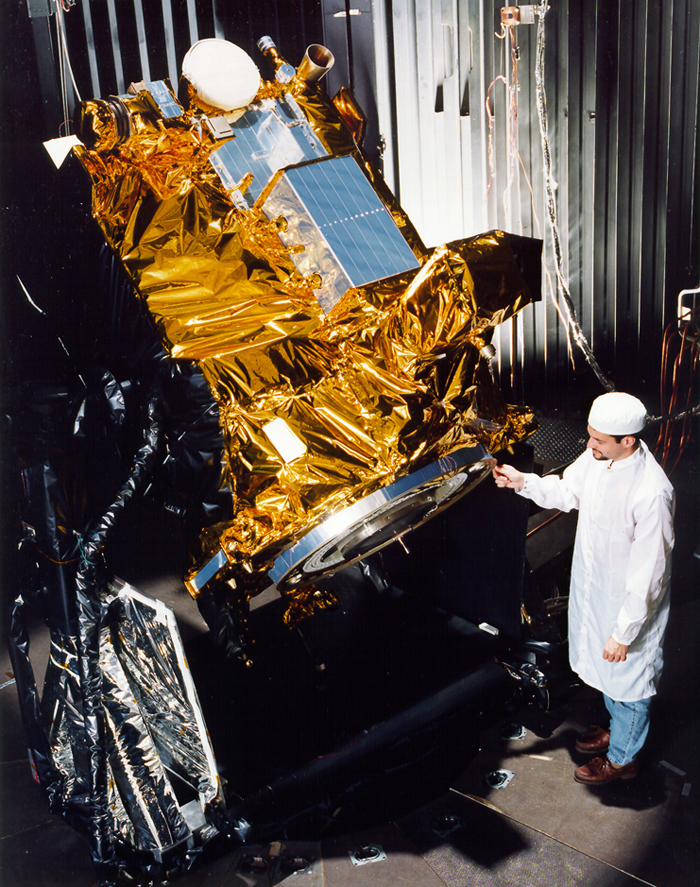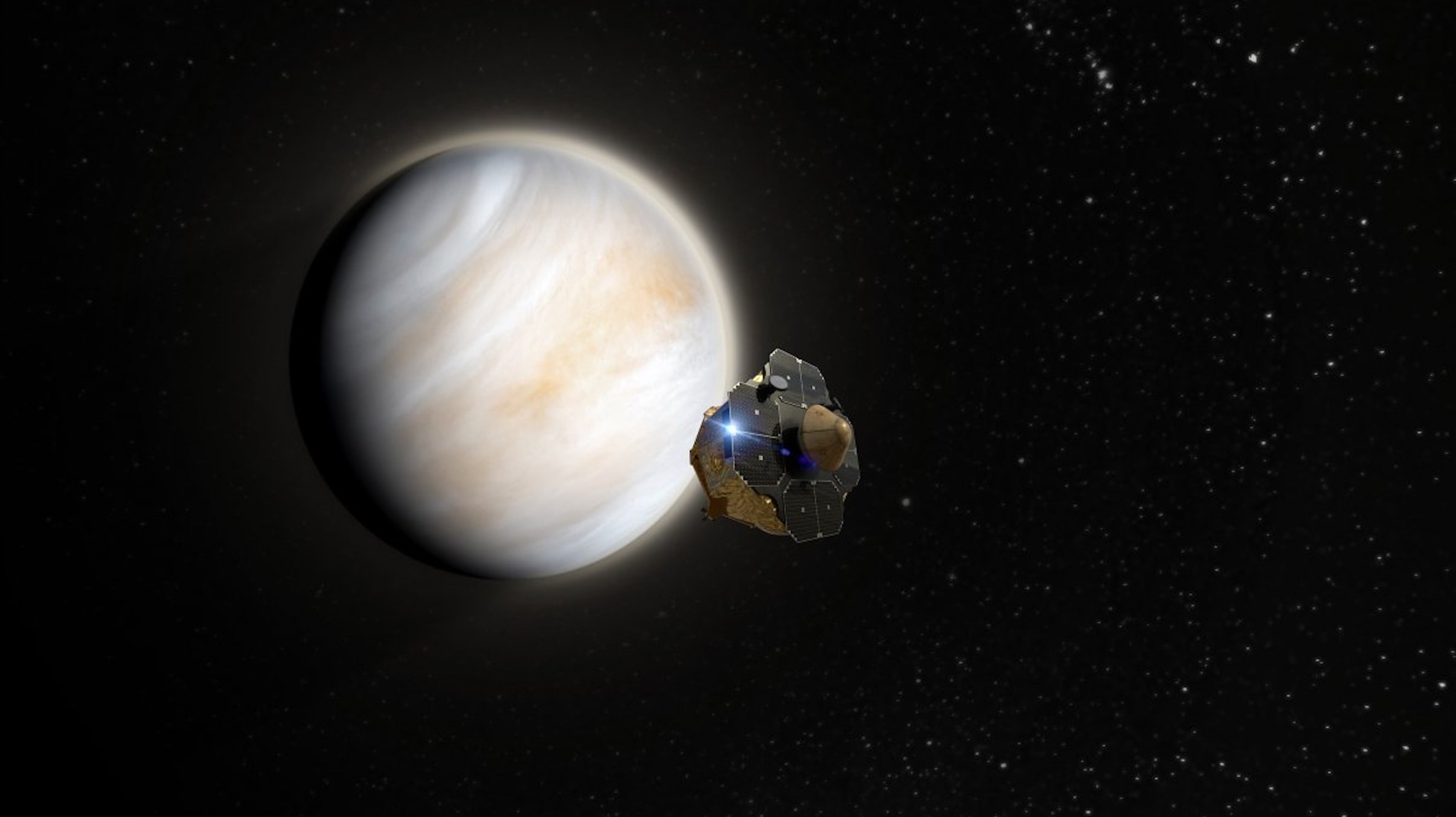Space History Photo: Deep Space 1 Technology Demonstrator

In this historical photo from the U.S. space agency, the completely assembled Deep Space 1 (DS-1) technology demonstrator spacecraft is displayed. The DS-1 spacecraft incorporates a number of advanced technology concepts in its mission, but none so "high profile" as its Ion propulsion system.
The name itself evokes visions of Star Trek and science fiction fantasy, although the idea actually dates from the 1950s. However, unlike the "Warp Drive" propulsion system that zings the fictional starship Enterprise across the cosmos in minutes, the almost imperceptible thrust from the ion propulsion system is equivalent to the pressure exerted by a sheet of paper held in the palm of your hand.
The ion engine is very slow to pick up speed, but over the long haul it can deliver 10 times as much thrust per pound of fuel as more traditional rockets. Unlike the fireworks of most chemical rockets using solid or liquid fuels, the ion drive emits only an eerie blue glow as ionized (electrically charged) atoms of xenon are pushed out of the engine. Xenon is the same gas found in photo flash tubes and many lighthouse bulbs.
Deep Space 1 was launched in October 1998 as part of NASA's New Millennium Program, which is managed by JPL for NASA's Office of Space Science, Washington, DC. The California Institute of Technology in Pasadena manages JPL for NASA.
Each weekday, SPACE.com looks back at the history of spaceflight through photos (archive).
Breaking space news, the latest updates on rocket launches, skywatching events and more!
Join our Space Forums to keep talking space on the latest missions, night sky and more! And if you have a news tip, correction or comment, let us know at: community@space.com.

The National Aeronautics and Space Administration (NASA) is the U.S. government agency in charge of the civilian space program as well as aeronautics and aerospace research. Founded in 1958, NASA is a civilian space agency aimed at exploring the universe with space telescopes, satellites, robotic spacecraft, astronauts and more. The space agency has 10 major centers based across the U.S. and launches robotic and crewed missions from the Kennedy Space Center in Cape Canaveral Florida. Its astronaut corps is based at the Johnson Space Center in Houston. To follow NASA's latest mission, follow the space agency on Twitter or any other social channel, visit: nasa.gov.
